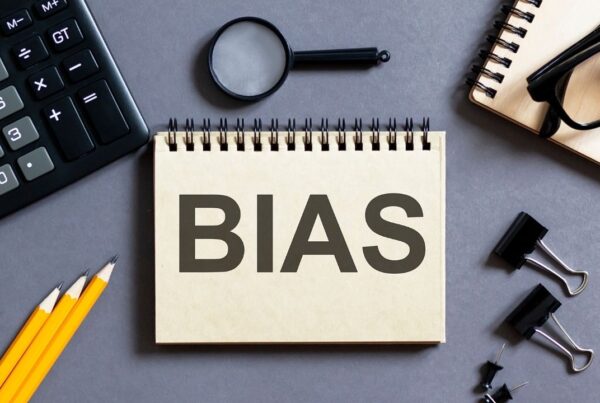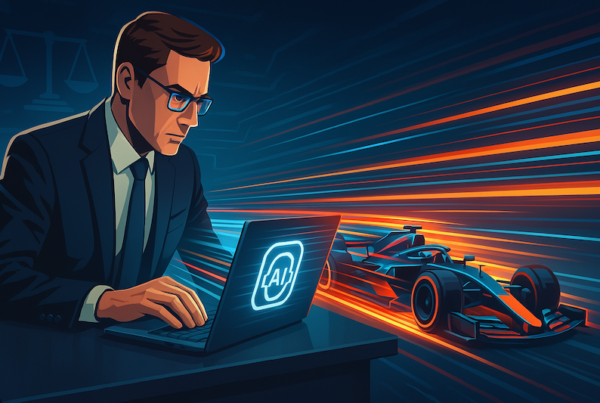If you get the sense that technology is changing our legal system, you’re right. But so was Larry Lessig over twenty years ago.
In his seminal work Code and Other Laws of Cyberspace, Lessig foresaw how technology would shape our digital lives, much like traditional laws. Two decades later, we see how his predictions have evolved and increasingly proven to be true.
Code as Law
Larry Lessig’s idea that “code is law” has become more evident with the increasing role of algorithms in our daily lives. Social media platforms, search engines, and even e-commerce sites use complex algorithms to control what content we see, shaping our behaviors and decisions.
These algorithms effectively regulate user behavior, often without transparency or accountability, illustrating Lessig’s point that code can function as an invisible form of law.
- Social Media Algorithms: Facebook, Twitter, and Instagram algorithms curate content, influencing public opinion and behavior.
- Search Engine Rankings: Google’s search algorithms determine the visibility of information, affecting knowledge access.
- E-Commerce Personalization: Amazon and other online retailers use algorithms to recommend products, shaping consumer choices.
Four Modalities of Regulation
Lessig identified four ways behavior is regulated: law, social norms, markets, and architecture (code). Today, these modalities are deeply intertwined in cyberspace.
For instance, data protection laws (law) like GDPR are influenced by societal concerns about privacy (social norms). Market forces drive tech companies to adopt privacy measures, while the architecture of platforms (code) must comply with legal requirements.
This dynamic interplay validates Lessig’s framework and highlights its relevance in the modern digital landscape.
- GDPR:The General Data Protection Regulation in the EU integrates legal standards with social expectations for privacy.
- Market Influences: Apple’s privacy features, driven by market competition, set new standards for user data protection.
- Platform Architecture: Facebook’s compliance mechanisms for global regulations reflect how code adapts to legal frameworks.
Cyberspace Governance
Governance of cyberspace remains complex, reflecting Lessig’s early concerns. Issues like content moderation, digital sovereignty, and cross-border data flows pose significant challenges. Multinational platforms like Facebook and Twitter navigate different legal landscapes, balancing local regulations with global operations.
The rise of decentralized technologies like blockchain also introduces new governance models, underscoring the evolving nature of internet regulation that Lessig anticipated.
- Content Moderation: Facebook’s Oversight Board addresses global content governance issues.
- Digital Sovereignty: China’s Great Firewall enforces local internet regulations, showcasing state control over cyberspace.
- Blockchain Governance: Decentralized platforms like Ethereum illustrate new, community-driven regulatory frameworks.
Privacy and Surveillance
Privacy and surveillance are more contentious today than ever. Lessig’s concerns about the dual potential of code to protect or undermine privacy have been realized.
On one hand, encryption technologies safeguard user data; on the other, mass surveillance by governments and data collection by corporations highlight vulnerabilities.
The debate over privacy continues to evolve, with ongoing legal battles and regulatory developments attempting to find a balance.
- Encryption: Tools like Signal and WhatsApp provide end-to-end encryption to protect user privacy.
- Mass Surveillance: Government programs like the NSA’s PRISM project illustrate extensive data collection capabilities.
- Data Collection: Companies like Google and Facebook track user behavior for targeted advertising, raising privacy concerns.
Intellectual Property
The internet has transformed intellectual property (IP) law, as Lessig predicted. Digital content’s ease of reproduction and distribution challenges traditional IP frameworks. The rise of digital rights management (DRM) and anti-piracy measures reflects attempts to enforce IP rights through code.
Yet, user resistance and alternative models like Creative Commons licenses show a shift towards more flexible IP management, aligning with Lessig’s vision of adaptable regulation.
- DRM Technologies: Services like Netflix and Amazon Prime use DRM to protect digital content.
- Anti-Piracy Measures: Initiatives like the DMCA takedown process aim to combat online piracy.
- Creative Commons: Licensing models provide a flexible approach to managing digital content rights.
Regulatory Choices
Finally, Lessig’s call for conscious regulatory choices in internet architecture remains pertinent. The development of technologies like artificial intelligence (AI) and the Internet of Things (IoT) raises new regulatory questions. Policymakers, technologists, and society must collaborate to ensure these technologies align with democratic values and human rights.
This ongoing dialogue underscores the need for proactive and inclusive decision-making in shaping our digital future.
- AI Ethics: Frameworks like the EU’s AI Act propose guidelines for ethical AI development and use.
- IoT Regulation: Policies addressing security and privacy in IoT devices aim to protect users in connected environments.
- Inclusive Decision-Making: Initiatives like the Global Partnership on AI (GPAI) promote international cooperation on AI governance.
Conclusion
Larry Lessig’s Code and Other Laws of Cyberspace, offered a visionary view of how technology would impact the legal system. Over the past two decades, his predictions have come true in unforeseen ways.
In short, Lessig’s insights provide a helpful guide for understanding what’s been happening and what’s likely to happen going forward.
Use technology to radically improve your law practice by focusing on the few core elements that have the biggest impact.






